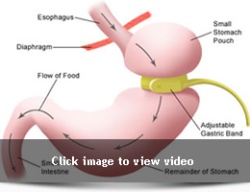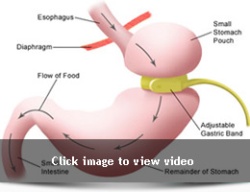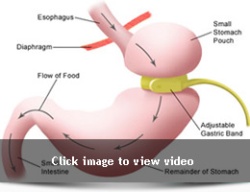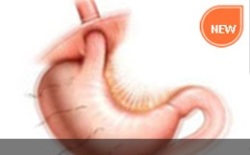Laparoscopic Gastric banding is shortly and popularly called as the Lapband surgery. It is one of the several types of Bariatric surgeries done to control severe obesity. This surgery is considered as the least invasive laparoscopic procedure and doesn’t involve any kind of cutting or stapling. In this procedure, a silicone band is inserted and applied around the uppermost portion of the stomach. The silicone band is completely adjustable. The constriction of the stomach can be determined by the injection of the saline into the expandable ring. This restricts the food intake.
Some of the risks of lap band surgery are:
• Bleeding
• Blood clots in the legs that may travel up to the lungs.
• Perforation of the stomach or esophagus during the surgery.
• Spleen or liver damage
• Erosion of the band into the lining of the stomach
• Nausea, vomiting, acid reflux
• Heartburns
• Stomach ulcer
• Problems while swallowing of the food
• Dehydration
• Diarrhea
• Constipation
• Weight regain
It is always a good idea to know about the risks of the surgery that you are going to have before taking the plunge. The major risks of gastric band surgery are:
• The biggest risk of any surgery like gastric bypass Mexico, lap band, gastric sleeve gastrectomy etc. is the risk of infection. The types of infections that are possible in the case of the lap band surgery are:
1. Infection of the surgical wounds
2. Abdominal infection
3. Port infection
• Malignant Hyperthermia: In this, there is an uncontrolled rise in the body temperature of the patient. It’s a kind of allergy due to the medications.
• The band when inflated squeezes the stomach to create the desired diameter of the opening for the food to pass. It’s normal for some level of swelling to occur but sometimes, there may be excessive swelling which may create a blockage of the stomach and the food may be completely unable to pass.





